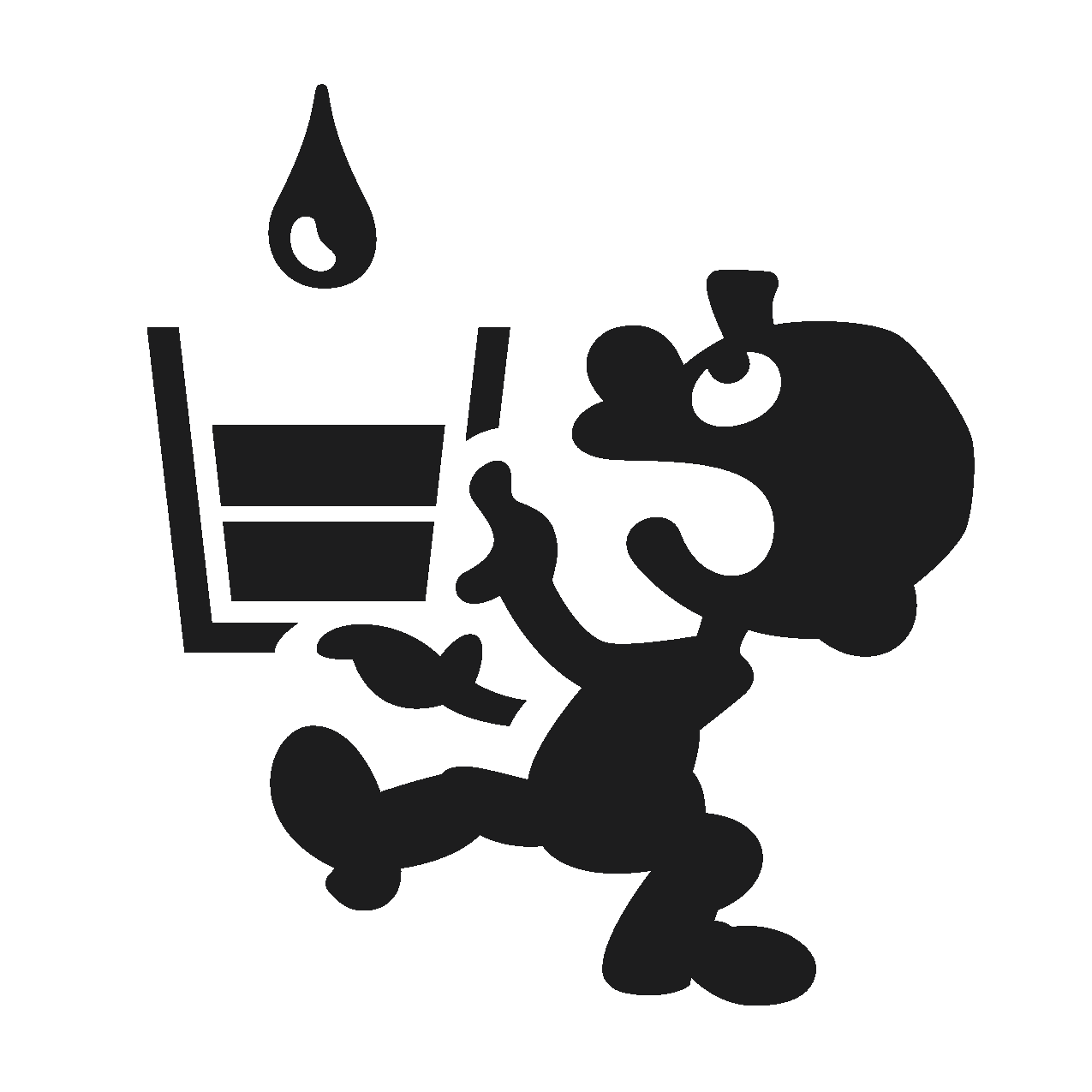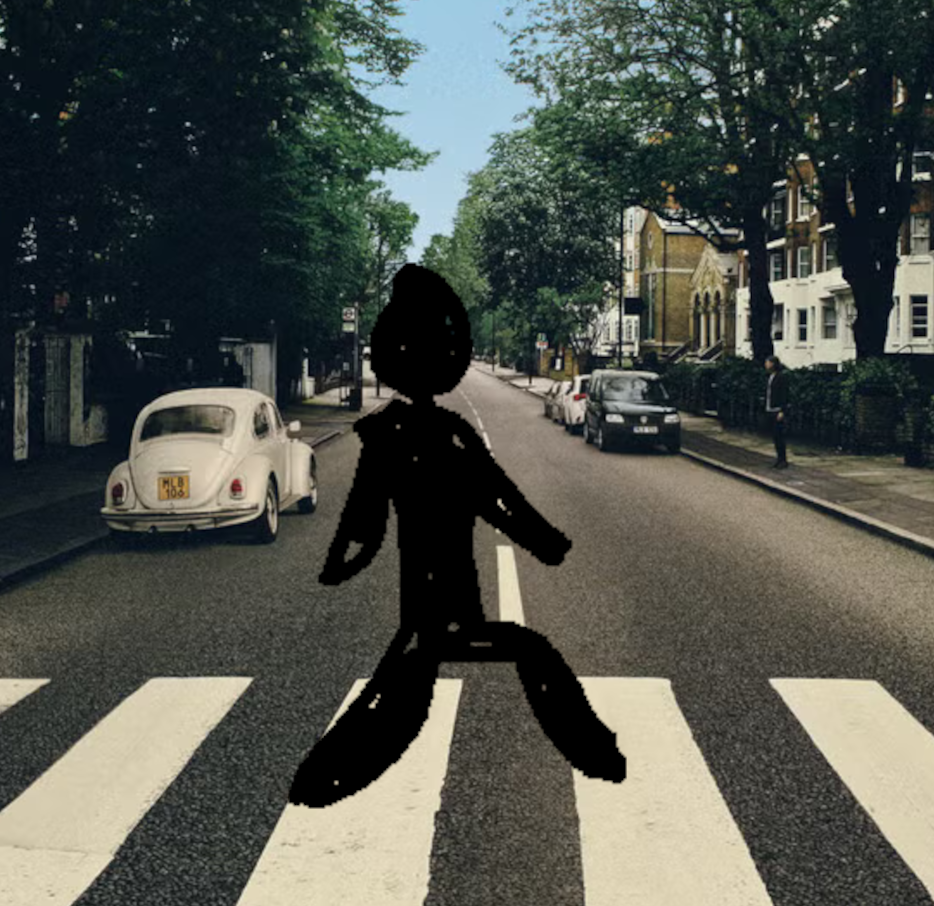I’m not sure I agree with the take for farenheit. It’s an arbitraty choice, and to me who grew up in a country that uses celsius, I find that far easier to understand and farenheit may as well be random numbers to me.
Whatever your grew up with will always seem more intuitive for most people. But given that I grew up with Fahrenheit, the whole “0 is cold as fuck, 100 is hot as fuck” thing works for me.
Farenheit is asking Americans how hot they feel.
Yeah, pretty much. I figured it was probably implied that I’m in the states. :)
I mean, SI units are objectively the best, and align with metric in most cases, but my brain is conditioned to accept Fahrenheit and miles per hour natively. Celsius and km/h have to go through an interpreter to convert them.
I have to say though, km/h has that “0 to 100” thing going for it that Fahrenheit does. 100 isn’t the fastest you’ll go, but it’s a typical highway speed.
Do Americans feel heat differently or something?
Outside of the USA noone knows what idk, 50°F feels like. Probably around room temperature since you say it’s based on how humans feel but I have no idea.
They’re one of only 3 countries in the world who still use °F, and represent 98% of the population who do so. So it’s basically just America.
So because right now only Americans use fahrenheit, it must be bad? Holy logical fallacy batman
No it’s bad for many reasons, that’s just why people say it’s American
Fahrenheit is our broken clock being right once a day
Yeah after I discovered that sort of meaning for fahrenheit, it made a lot more sense to me. So no issues with fahrenheit, but imperial is still crazy to me
As an American this is how I feel. I don’t mind Fahrenheit but for absolutely everything else I desperately wish we’d switch.
I know someone who knows both “natively” and celsius is much more logical to them because 1. kelvin has the same steps as celsius so for any science its much easier 2. freezing is 0 celsius so for weather(the thing you use temperature most commonly for) its really useful. Same with cooking.
“Oh but 100 Fahrenheit means 100/100 on the hot scale, it just makes intuitive sense!”
WHAT DOES THAT EVEN MEAN?? Fahrenheit lovers literally don’t know how ridiculous they sound
Right? Lol
When it’s above 100, people who have options for something lower will generally go for them. Similarly for under 0. OK, so as [email protected] pointed out, such sensitivities might be specific to US culture, but theoretically, how much would we have to expand the 0-100 Fahrenheit range so that 0 is too cold for pretty much everyone and 100 is too hot for pretty much everyone? 0 goes to -10, 100 to 140? A new-Fahrenheit degree would still be more precise than a Celsius degree.
My point is “really hot” and “really cold” are not useful reference points to ascribe to, no matter what numbers you’re using. If i was coming up with a measurement system for brightness and i said 1000 was “really bright” would you be able to tell me anything about 500? No because you literally have no reference frame for what i mean by “really bright”. It’s the same thing when Americans describe Fahrenheit to the rest of the world. You have to experience the data points, and at that point, whether you use 0 to 100, -20 to 40, or 250 to 310, it doesn’t matter. You will just intuitively understand the scale and so there’s no inherent benefit.
What’s not to get lol. Think about when it’s really really cold outside. That’s 0. Think about when it’s really really hot outside. That’s 100.
What’s not to get lol. Think about when it’s really really cold outside. That’s 0.
No? Lmao
Nah it’s more like, one degree fahrenheit is the smallest change in temp that the average human can sense.
I call bullshit, like yeah I’m sure that’s the smallest degree or whatever, but how ‘hot’ or ‘cold’ something feels is up to way more than just temperature like humidity, wind chill if it’s sunny or cloudy so in a real example I doubt a person can notice the difference between a 66°F and 65°F day because there’s so many other factors. And you know what it is actually really bad at? Telling people when stuff freezes, you think some person from texas or nevada or any place that usually doesn’t get cold enough knows the exact freezing point in fahrenheit? Most people will guess around 30 while pretty much everyone knows that the freezing point of water in celsius is 0°
“I grew up with a completely different scale, so this scale makes no sense to me!”
Well no fucking shit.
I was trying to be polite as to not trigger Americans which generally happens when you critique Imperial measurements. The post makes no sense to me as it assumes that Farenheit is correct for humans to communicate temperature. The post should read.
Celcius is basically asking water and most humans how hot they feel, Kelvin is basically asking atoms how hot they feel and Farenheit is basically asking me how hot it feels because I didn’t learn the others.
It makes sense that you find the system you grew up with to be more intuitive, but I grew up with fahrenheit, and I think you’ve misunderstood the assertion a little bit.
The older observation that this meme is riffing off of is that 100°C is the point at which water stops being sloshy and starts being steamy, whereas 100°F is the (much fuzzier) point at which humans stop moving around and start decomposing.
The Kelvin addition muddies things because 100K isn’t really significant.
But there’s numbers below 0 and beyond 100. I don’t know why some are so focused on just those two points
I feel like 0-100F encompasses most living temperatures in the USA. It’s also a cleaner scale (in terms of human-comfortable temperatures) than 32 to 37.779 in that regard. 0F is the temperature where humans need to make sure they aren’t wet and make sure their drinking water isn’t left outside. 100F is the temperature where we need to be worrying about heat stroke and accelerated dehydration.
So, making this human-intuitive scale of temperatures a 0-100 range makes it easier to understand for a layperson.
32 to 37.779? You just converted 0C to F (backwards) and 100F to Celsius…
0F is way lower than the temperature water freezes at (32F). Water freezes at 0C.
Comfortable temperatures are between 22C and 27C, let’s say, which converts roughly to 72F to 80F. None of these are “more intuitive” than the other.
If I see ice, I know it’s below 0C. If water boils in my pot, I know it reached a temperature close to 100C. Fahrenheit on the other hand is based on completely arbitrary points.
Lmao I’m so dumb, I was very tired and wrote this in a state of “brain please wake up” limbo.
Point still stands, just 0 to 100 and -17.777 to -37.778
Your brain must still be a little tired, because why on earth would you think we would use Fahrenheit’s 0 and 100 as a basis for anything in Celsius?
I could say the same thing backwards: 0 to 100 C is 32 to 212 F.
The only reason there aren’t weird decimals there, is because Fahrenheit was later adjusted to have whole numbers at those same (water based) temperatures.
in the USA
Well there’s a bit of a problem with that one…
It’s also a cleaner scale (in terms of human-comfortable temperatures) than 32 to 37.779 in that regard.
Cleaner…?
I don’t know if this’ll help, but I find it interesting. Fahrenheit was designed to make creating thermometers easier. You pop your new thermometer into some ice water, call that 32, pop it in your mouth, call that 96 (human body temperature is actually 98.6, but these weren’t the most precise instruments), and then you can just keep dividing the space between them in half until you get 64 degrees.
Obviously Celsius is more scientific and practical in modern times, but I think Fahrenheit is fascinating, if nothing else.
I don’t understand your logic. I could just as easily change your text to say
Celsius was designed to make creating thermometers easier. You pop your new thermometer into some ice water, call that 0, pop it in boiling water, call that 100, and then you can just keep dividing the space between them in half until you get 100 degrees.
That’s some weird logic there. Why 32 and 96? From what I remember, 100 was supposed to be human body temperature (but he had it wrong), and 0 was the coldest temperature he could achieve with brine.
To add, I remember being told (rumor?) the reasoning for the 100° body temp was that it was created before modern medicine and was supposed to be the avarage temp of the population given that being slightly febrile was supposed to be normal.
(I don’t know how true this is as I don’t really care about the imperial system and don’t really feel assed to research it. Just relaying what I’ve been told)
I group up with F, I find it far easier to understand. Celsius is slightly less random, but someone still arbitrarily decided it should be 0 to 100 for the liquid state of pure H2O at sea level. It could have been based on any other number of ranges.
I’m biased living in a °C country, but water seems like a better choice than anything else, since water is a common element that we can easily observe its phase changes and those phase changes effect how we have to interact with it on a daily basis.
Although if I was to improve it I think I’d base it on the temperature range that salmonella can grow, as that seems like it might be useful to be able to remember more easily 😂 🧑🍳
Of course it’s all pretty much arbitrary. But I think the point was more “celius puts the scale of heat levels of water heat from 0 - 100, farenheit puts the human feelings scale of heat from 0 - 100”
Ssshhh. Just give it to us. We Americans don’t have much else left
Fahrenheit was not an entirely arbitrary choice: it was defined based on two points of reference that could be measured at the time: the freezing temperature of an ammonium chloride brine is used as 0, and the best estimate for the average human body temperature is set at 96.
Over time, as the freezing point and boiling point of water at sea level atmospheric pressure proves to be more accurate reference points, the Fahrenheit scale was adjusted to provide exact conversion to Celsius.
deleted by creator
I think it’s because 96 is divisible by 3.
100 is divisible by 5, so what’s your point?
96 is divisible by 1, 2, 3, 4, 6, and 8
Are you telling me they were able to measure those things, but not the boiling and freezing point of water?
Sure, let me just whip up that ammonium chloride mixture and travel somewhere where I can get it close to freezing so I can know the zero reference of that scale. What, did the just carry that NH₄Cl around for convenience?
Fahrenheit was proposed in 1724, Celsius dates back to 1742, so there wasn’t that much time between the two.
Boiling point of water varies based on atmospheric pressure, water boils at a lower temperature high up in the mountains, for example, which could be why the estimated human body temperature is set as a standard, because it is consistent to reproduce as long as there are people around.
The freezing point of water is not affected by atmospheric pressure, however, it is affected by dissolved material in the water. Using a saturate solution of a salt would establish that consistency as well as lower the freezing point to create a bigger temperature range.
Does ammonium chloride brine not freeze at different pressures?
A bit of mistake I made there, I should say that the freezing point is relatively unaffected by pressure compared to the boiling point, and the amount of dissolved impurities are going to have a greater effect.
Fahrenheit was not an entirely arbitrary choice
it’s not arbitrary, it’s based on the uh, the freezing temperature of uh, ammonium chloride! we’re all familiar with how cold that is! and, and, and, uh, the upper end is, uh … they decided on 96. it’s not arbitrary!!!

It’s based on how humans feel about heat, which was then translated into ammonium chloride so as not to be arbitrarily based on opinion. Without basing it on a chemical solution, it wouldnt be recreatable.
bro used a wojak unironically lmao

Rightfully so
Yeah it’s less human based than Celsius since humans survive equally on the sides of 0 (-40 to 40)
So humans feel cold at 0F and hot at 100F? I dont think thats true. Humans start quickly dying at something around 32F and 180F. Fahrenheit is complete nonsense. It has nothing to do with humans. And considering humans are mostly water Celsius seems a much better fit.
So humans feel cold at 0F and hot at 100F?
In aggregate this is absolutely true, though not the point anyone is making.
Humans start quickly dying at something around 32F and 180F
Humans will die of dehydration or heat stroke quite quickly at temperatures well below 180F. In fact that’s far hotter than the hottest recorded temp on Earth (~135F/56.7C) (not including human-made environs like a sauna or outliers like an active volcano) so I’m frankly not sure what point your even trying to make here.
Fahrenheit is complete nonsense. It has nothing to do with humans.
The latter statement is manifestly false. Fahrenheit was originally supposed to have 90 degrees as the average humans body temp (no clue why 90 and not 100). Due to inaccuracies in measurements of the time, It was later changed to 96 and then 98.7. Still no clue why not just 100, but the fact remains it was based on human body temps. The zero point was selected using the freezing point of a brine mixture. No real defending that one, it was pretty much arbitrary.
And considering humans are mostly water Celsius seems a much better fit.
But we aren’t just water. In any case, humans are rarely at boiling temperature. My ideal temp scale would have 0 at water’s freezing point and 100 at a humans body temp.
Why base it on human body temperature at all though? That’s only useful when you’re trying to see if you have a fever, and even then that’s a number that varies wildly between people.
Air temperature is what we most often measure and talk about, and it needs to be far below body temperature to be comfortable.
A useful way to think about it (and I think what the OOP is saying) is to think about it as a scale from 0-100. Where 0 is like the coldest humans can deal with and 100 is the hottest humans can deal with. Obviously this isn’t strictly true (it gets to like 115 in death valley) but as an imperfect generalization it’s pretty useful.
Yeah, no, that’s not helpful at all - what I consider cold and what my mum considers cold are very different temperatures, and what I consider hot and my neighbour considers hot has an even bigger difference.
You rationalise it with the “human scale” idea, but really you just know the range of temperatures you’re personally comfortable in, just like everyone using Celsius does.Then 50 is the optimal temperature right?
With 80 being as uncomfortable as 20
oof great point, i didn’t think you could convince me to hate farenheit, i was ride or die for the imperial temperature measurement unit until right now
Nice sarcasm but I wasn’t telling you to hate it, just that your statement wasn’t logical
oh no that was sincere sorry. i really mean that you actually made a great point
I grew up in Canada, but in a temperate climate area on the border with the US. Winter? Use Celsius. Summer? Use Fahrenheit. For me Celsius makes a lot more sense right around 0C. After about 15C my brain switches over and starts using Fahrenheit. I like the Fahrenheit scale from 60-100F for gauging the summer months. The Celsius scale isn’t granular enough. It feels like there’s a big difference between 18C and 22C versus the comparable 64F-72F. But I also was taught early a quick and dirty conversion. C to F, double and add 30. F to C subtract 30 and divide by 2.
I don’t think I can tell the difference if something is only one degree apart in Celcius, let alone Fahrenheit.
Comparing an 18C day to a 19C day, for example, I challenge anyone to notice a difference. A 64F to 65F day? Good luck.
I agree with the Celsius scale making sense around zero. Water freezing is probably one of the most relatable, quantifiable examples of a temperature point for the most humans. However, lots of people don’t live somewhere that it snows, or even own a freezer.
So what’s the most common touch point for people? I’d go with water boiling. I can’t really think of what sort of person who did not have exposure to that at some point. That should be the zero point, the common denominator.
Does maple syrup ferment? Have you had old maple syrup recently?
Is it good?
I made fermented maple syrup a few years ago.
It tastes like shit. Imagine you take a green branch off a tree and suck on it, then you add alcohol. Bleh.
Where I live the weather varies between -5 to 95. That’s pretty close to a 0-100 scale which is universally understood. It’s almost like metric for the human experience.
Where the fuck did you grow up? On Venus?
I love Fahrenheit, it’s awesome. It’s the only non-metric unit I prefer.
Fahrenheit is roughly a 0-100 scale of “places humans can conceivably live”. 0-100 scales are more intuitive than a scale from like -15 to 40, which is approximately what celsius uses for the temperatures humans can live at.
Always leaving out the rare Rankine
Asking human atoms how hot it feels
Talk about your self my lower limit is 0 °C
That is technically correct, regardless the scale you opt for.
I heard this meme.
deleted by creator
















